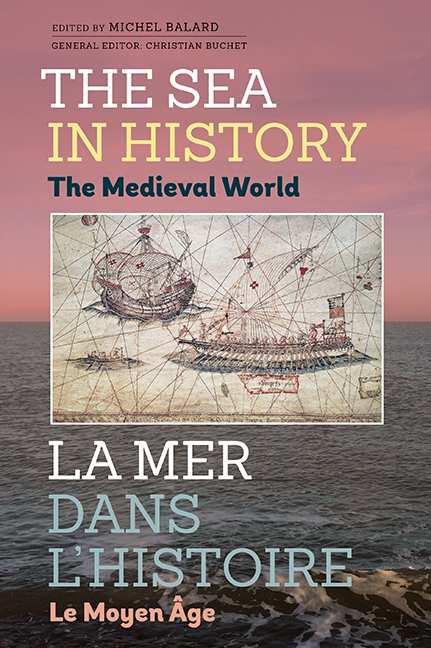Book contents
Shipbuilding in Portugal in the Middle Ages
Published online by Cambridge University Press: 19 May 2017
Summary
ABSTRACT. The author notes the longstanding maritime relations with Portugal proven by the Byzantine then Umayyad conquests and the increase of Atlantic navigations in the 15th century thanks to Henry the Navigator. Underwater archeology has revealed much information about shipwrecked vessels. Graffiti has also provided information in the absence of text documents and naval treaties. The author analyzes the Italian, Arabic, and Basque influences on construction techniques and explains the transformations linked with the opening of Atlantic navigation in the 15th century.
RÉSUMÉ. L'auteur note l'ancienneté des relations maritimes du Portugal, attestée par les conquêtes byzantines, puis omeyyades, et par l'essor au XVe siècle des navigations atlantiques, grâce à l'oeuvre d'Henri le Navigateur. L'archéologie sous-marine a livré beaucoup d'informations sur les navires naufragés, de même que les graffiti, à défaut de documents textuels et de traité naval. L'auteur analyse les influences italiennes, arabes et basques sur le mode de construction des navires et évoque ses transformations avec l'ouverture de la navigation atlantique au XVe siècle.
Always predominantly a rural economy, based on the exploitation of a handful of poor crops, Portugal and its history have been nevertheless largely shaped by the sea. With a long coast and occupying roughly one fifth of the Iberian Peninsula, its boundaries were carved by political and demographic forces during the upper Middle Ages and do not reflect any geographical homogeneity. The exploitation of marine resources, minerals, and agricultural products triggered the development of important harbour cities during the Roman occupation (Alarcão 1988, 1997). Ancient and medieval seafaring on the Portuguese territory cannot be separated from the river navigation that defined the Portuguese hinterland, which supplied the coastal commercial harbours. Coastal and fluvial harbours developed simultaneously, and propitiated the development of urban centers. Coastal harbour cities such as Ossonoba, Lacobriga and Olisipo developed in relation with fluvial harbours, such as Myrtilis or Scalabis, to cite just a few examples (Blot 2003).
- Type
- Chapter
- Information
- The Sea in History - The Medieval World , pp. 306 - 321Publisher: Boydell & BrewerPrint publication year: 2017



